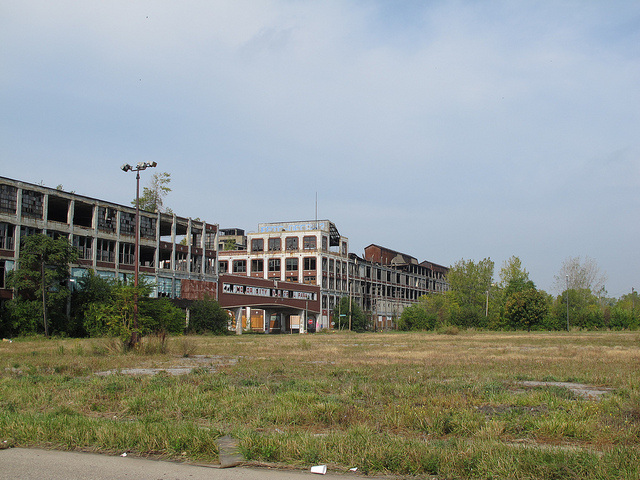
The everyday struggle in heritage conservation is the dynamic between entropy and conservation.
The former is dynamic and the later is static, and yet this seems to be an inadequate explanation. Old-school conservation was about consciously preventing entropy or decay – whether natural or cultural.
Heritage was conceived within the modernist project as preventing a return to equilibrium. An historic building was required to be conserved so as to mitigate decay, preventing the building to descend into a natural state of equilibrium between energy stored and energy spent. It was to be rigorously and meticulously maintained, even rebuilt, for the benefit of society. From the mid-19th century to today, there has been the luxury of restoration – we have enjoyed the fruits of their labour when visiting historic places.
Is heritage conservation about preventing entropic states or is it about finding equilibrium?
News services were reporting on bankrupted Detroit, Michigan. Once a producer, the city has gradually decayed over recent decades as economies shift elsewhere. The city’s preservationist’s met the challenge head on:
Preservation Detroit is Detroit’s oldest, largest, and most accomplished historic preservation organization. As the first Detroit recipient of the National Trust for Historic Preservation’s Honor Award, we have been working to preserve and revitalize Detroit’s rich architectural and cultural heritage since 1975. (source)
Was Detroit successful in preserving its heritage? Was it able to restore or revitalize the city?
In parts, yes. And yet, it begs the question whether Detroit has prevented an entropic state in light of news that the tax base has dried up. In the 2000s, Kenny Greenberg consulted with the city to resuscitate the city’s vibrancy. Perhaps his attempts weren’t strong enough to revive a dying city. Detroit illustrates best the dynamic between entropy and conservation. Preserving a past is a conscious act by humans to prevent a return to equilibrium.
How then does heritage conservationists address entropy in the modern age? How does a conservationist attempt to address entropy in the everyday world?
Entropy takes energy to arrange and rearrange. The state of conservation work is similar. It is not about resorting the present world into a past order, but to bring an equilibrium to the present state. Which means that, at best, conservation allows for a better equilibrium than, for example, demolition. Demolition is false equilibrium. It takes energy to create a so-called equilibrium. So often in society, demolition is raised as a way to begin again. Will Detroit rise again or will it continue to implode with the faint hope that a preservationist will come along and say that the only way to remain vibrant is to preserve the heritage?
Unfortunately, this approach has failed. A more realistic approach is to use conservation to create states that manage entropy. This would be especially useful for industrial landscapes and complexes.